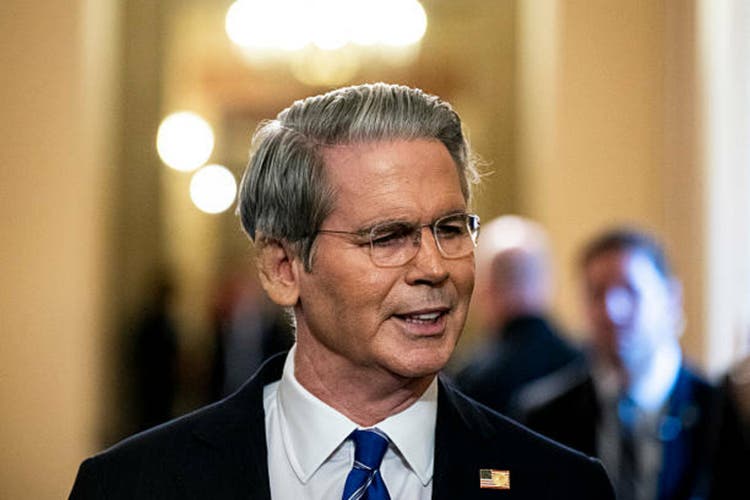Before becoming the founder Bridgewater Associates, not to mention a celebrated author, Ray Dalio faced a moment of financial distress that reshaped his entire approach to investing and life. After being fired early in his career, Dalio founded what would become the world’s largest hedge fund as an independent operation, run out of his two-bedroom apartment in New York City. Within a few years, he found himself “so broke” he had to borrow $4,000 from his father just to cover family bills.
“This was painful,” Dalio told a fellow billionaire, Carlyle Group co-founder David Rubenstein, in a conversation at New York’s 92nd Street Y in July. But it also had a deep impact, he continued.
“That changed my approach to everything,” Dalio said, adding he learned two key lessons from this episode.
After striking out on his own to found Bridgewater in 1975, Dalio said he hit his lowest point around 1980-1981, when he had calculated the U.S. had lent more money to countries than they could ever repay and predicted a major debt crisis. When Mexico defaulted on its debt in 1982, Dalio believed his position would pay off, even in the face of the severe economic crisis that he anticipated. However, he “couldn’t have been more wrong.” Instead of a downturn, the stock market went up, and monetary policy was eased, costing him dearly. This miscalculation left him financially devastated, forcing him to borrow $4,000 from his father to meet family expenses.
“Nobody does everything perfectly, not even Warren Buffett,” Dalio told Rubenstein, but this episode gave him the “humility” to go along with his “audacity,” he said, along with a very simple lesson in “the power of diversification.”
Dalio’s lessons
This humbling episode fundamentally changed Dalio’s perspective, he said, leading to two transformative insights:
• Lesson 1: Cultivating Humility and Questioning One’s Own Certainty. The experience made Dalio reflect deeply on how he could truly know if he was right. This new approach led him to a practice he began roughly 35 to 40 years ago: pausing to reflect and write down the specific criteria he would use to make a decision. This act of documentation forced deeper thought, and he later realized these criteria could be coded and back-tested to evaluate their effectiveness over time. This systematic approach to decision-making, which he calls “principles” (having written down thousands of them), became the bedrock upon which Bridgewater Associates was built. It’s also the title of Dalio’s New York Times bestseller.
• Lesson 2: Embracing the Power of Diversification. The crisis also led Dalio to appreciate diversification could reduce risk by up to 80% without diminishing returns. This revelation became the “bottom of Bridgewater,” he said, from which point the firm saw consistent positive returns, averaging roughly 11.8% over the subsequent 30-plus years, with only minimal annual declines. His investment mantra became “15 good uncorrelated return streams,” engineered to have similar expected returns, which he found dramatically lowers risk and boosts the return-to-risk ratio by a factor of five.
For Dalio, this near-ruinous period was not merely a setback but a profound educational experience that redefined his investment strategy and personal philosophy. Now that he’s in a “stage in life where you’re passing things along,” Dalio said he finds “great joy” in sharing these learned mechanics and cause-effect relationships with others. His goal isn’t to scare people, but to provide understanding, operating on the principle that “if you worry you don’t have to worry and if you don’t worry you need to worry,” as worry can prevent what one fears. His personal financial rock bottom ultimately became the foundation for his enduring success and his commitment to teaching others how to navigate complex financial landscapes.
Dalio’s new book on how countries go broke
Going broke was on Dalio’s mind because of the subject of his new book: How Countries Go Broke: The Big Cycle. Dalio, who often issues warnings on social media about America’s record $37 trillion national debt, wrote on LinkedIn he wanted to write this book because he sees the U.S. and other countries “headed toward having the equivalent of economic heart attacks.” He said he wanted to explain the mechanics and principles he uses, ever since he learned those key lessons in the early 1980s.
He likens the credit/market system to the human circulatory system, “bringing nutrients to all parts of the body that make up the markets and economy.” If this doesn’t produce enough income to service debt and interest, then “debt service will build up like plaque that squeezes out other spending.”
In a statement provided to Fortune, Dalio said one of his principles relates to recognition of big cycles and patterns.
“The same basic big cycles that drive these systems to change have happened thousands of times before for the same reasons,” and he is describing the “Overall Big Debt Cycle” in this book because he believes the world is “on the brink of very big changes.”
It’s the product of years of audacity, sprinkled with a great dose of humility and constant diversification.
This story was originally featured on Fortune.com

 1 hour ago
1
1 hour ago
1












 English (US) ·
English (US) ·